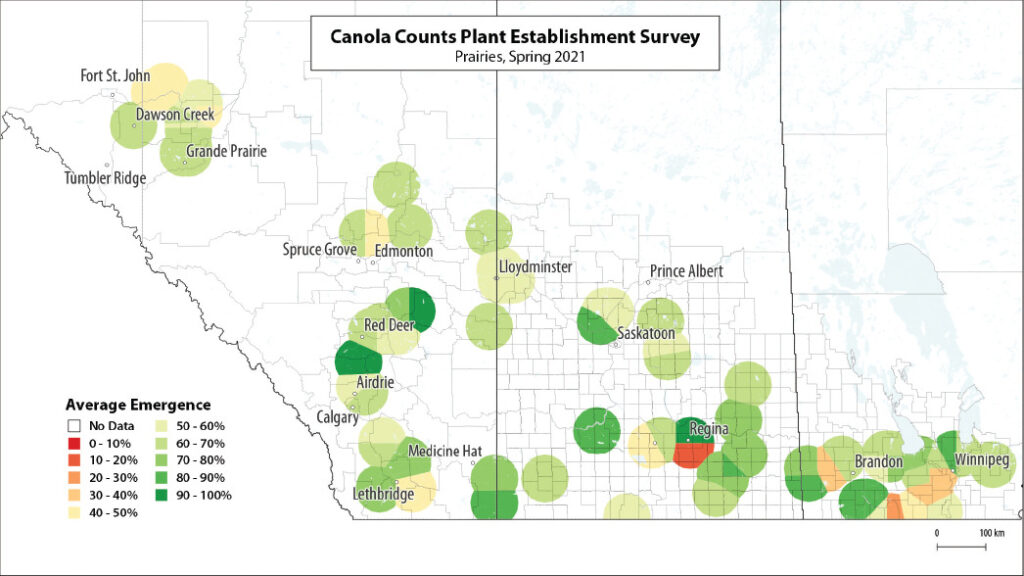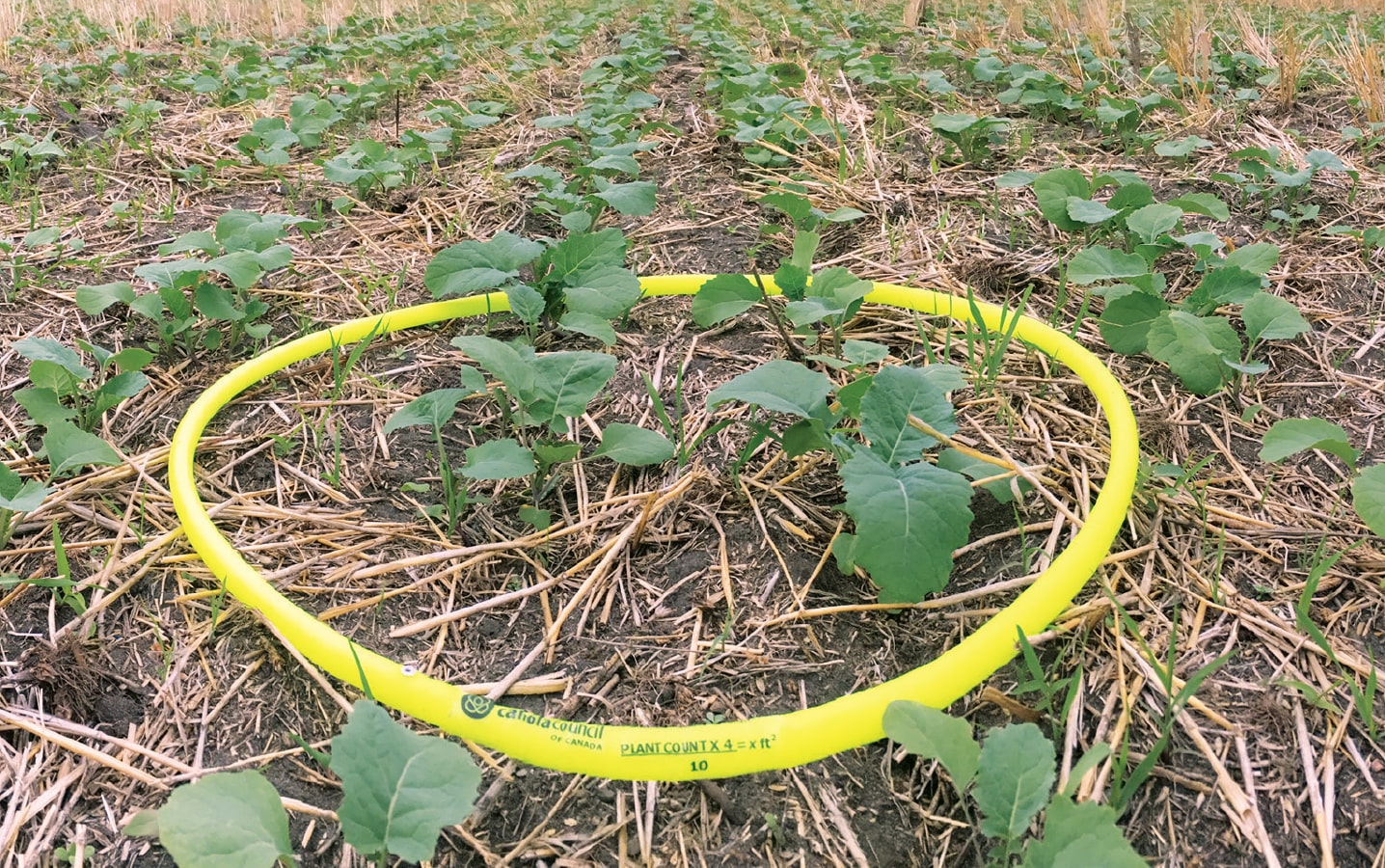Was Your Canola Stand Good Enough?
In-season stressors and self-thinning can reduce plant density by 10 to 15 per cent, sometimes more, between emergence and harvest. Growers can use fall plant counts to better understand how canola fared this season, and identify areas for improvement. The constant quest to improve keeps a business moving in the right direction.
We know that the ideal canola population for yield is five to eight plants per square foot spread evenly across the field at a uniform growth stage. This is based on results from numerous hybrid canola research studies done in Western Canada.

How do your fields measure up?
Canola growers can enter fall counts at CanolaCounts.ca, the online portal for a crowdsourced research project from the CCC and provincial canola grower associations. Growers and agronomists who enter field results will get a report to see how their results compare to average results for the region.
From a macro perspective, the CCC will use this information to see how many fields are meeting the minimum five plants per square foot target stand for yield. If some regions are lower than others, the CCC can look more closely at the factors contributing to those lower numbers and develop agronomy messages specific for that area.
Canola Counts Plant Establishment Survey


What did we learn from spring 2021 counts?
The Canola Counts survey launched in May to gather counts taken after emergence. While some parts of the prairies started the season with decent moisture, other areas saw compounding problems as a result of dry soils in the spring. The emergence map below illustrates the variability in emergence, with numbers ranging from below 20 per cent, up to over 90 per cent. Remember that emergence is the number of plants actively growing, as a percentage of the seeds planted.
Interestingly, while Canola Counts data showed low to average emergence in 2021, most fields submitted were within the recommended five-to-eight-plants range for canola plant density.
How to participate in Canola Counts this fall?
Swathed or combined fields are relatively easy to move around in, and the goal is the same as in spring: get a good representative average plant density for each field. With plant count results as well as seed size in grams per 1,000 seeds and seeding rate in pounds per acre, the online tool at canolacounts.ca will quickly calculate emergence. For growers, emergence percentage is helpful for economic assessment, as emergence rates are necessary for calculating return on investment for seed and evaluating stand establishment methods that could improve emergence rates for 2022.





